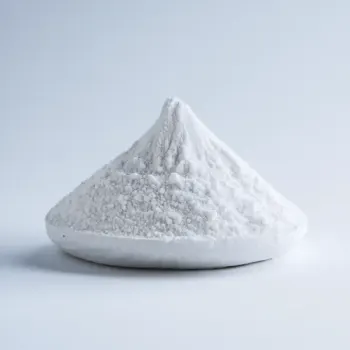Potassium Bicarbonate and Baking Soda are both leavening agents used in baking. Potassium Bicarbonate is a sodium-free alternative, suitable for low-sodium diets, while Baking Soda is widely used and pairs well with acidic ingredients for a strong rise in baked goods.

Potassium bicarbonate is a white, odorless powder often used as a leavening agent, acidity regulator, and in medical applications. It's similar in function to baking soda but without the sodium content, making it a favorite for those monitoring their sodium intake.

Baking soda, also known as sodium bicarbonate, is a common leavening agent used in baking. It reacts with acidic ingredients to produce carbon dioxide gas, which helps baked goods rise and become fluffy.
While both are leavening agents, potassium bicarbonate contains potassium instead of sodium, making it a healthier alternative for those on low-sodium diets. Baking soda, on the other hand, is more commonly available and widely used in various recipes.

Your ultimate Recipe Box, Meal Planner, and Cooking Class all in one
Ideal for cookies, muffins, and cakes where a sodium-free leavening agent is preferred. It's less potent than baking soda, so you may need to use more to achieve the same rise. Expect a lighter texture and remember to balance the flavors as it can slightly affect taste. Perfect for pancakes, quick breads, and other baked goods that require a strong leavening agent. Baking soda can impart a distinct flavor if used in excess, so measure carefully. It provides a robust rise, especially when paired with acidic ingredients like yogurt or buttermilk.
Use potassium bicarbonate in desserts like sugar-free cakes or low-sodium brownies. It can help avoid the metallic taste that sometimes accompanies baking soda. The desserts will be light and airy with proper leavening. Baking soda is a staple in cookies and traditional cakes that require a crisp exterior and tender crumb. Use it when making gingerbread or snickerdoodles for a perfect texture and rise.
In recipes like whole wheat bread or low-sodium crackers, potassium bicarbonate is a suitable choice. It aids in rising without adding sodium, which can be beneficial for heart health. Baking soda is useful in gluten-free recipes where it can help mimic the texture that gluten would typically provide. It's also good in vegan baking to replace eggs as a leavening agent when combined with vinegar.
Potassium bicarbonate offers a healthy dose of potassium, which is vital for heart health and muscle function. Baking soda is lower in potassium but can contribute to your daily sodium intake.
| Nutrient | Baking Soda ( per Teaspoon ) | Potassium Bicarbonate ( per Teaspoon ) |
|---|---|---|
| Sodium | 1257mg | 0mg |
| Calories | 0 | 0 |
| Potassium | 0mg | 390mg |
Yes, you can generally substitute baking soda for potassium bicarbonate in a 1:1 ratio, but you may need to adjust for potency and sodium content.
Potassium bicarbonate can be considered healthier for those on low-sodium diets or looking to increase their potassium intake, but both substances have their unique uses in cooking.
Potassium bicarbonate has a milder taste than baking soda, and while it shouldn't significantly alter the flavor, it may require flavor adjustments in some recipes.
The chemical difference lies in the metal ion present in each compound; potassium bicarbonate contains potassium ions, while baking soda contains sodium ions.
Potassium bicarbonate is not as commonly used for cleaning as baking soda, and its different chemical properties may not make it as effective for certain cleaning tasks.